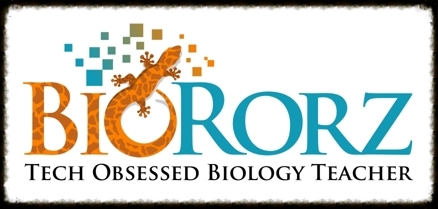March Madness and How I Learned to Love Physics
It has been a rough week, and it is only Monday. March Madness has an entirely different connotation for IB teachers. While basketball fans all over enjoy the frenzy of NCAA fever, IB teachers are similarly overcome with a frenzy of panic. Will I finish the syllabus before mocks or better yet, exams in May? Will they manage to submit an internal assessment that will give them the points that they need to achieve their goal? Have I done all that I can do to combat the senioritis that is invariably picking my students off one by one? This is my March Madness, and it happens every year like clockwork. It is times like these that I need to remind myself why I teach in the first place.
I have been teaching biology for the past 16 years. It is my first love and my passion. Naturally, chemistry fits right into my passion, so by default, I love chemistry as well. If I could spend my days exploring the mysteries of these two disciplines in depth with my students, I would be a happy girl. However, when you teach in a high school with only 200 students, you need to be a jack of all trades. This means that physics has to enter into the equation. For 13 of my 16 years of teaching, physics has been a part of my repertoire. Every year, I converted countless students to the biology and chemistry fan clubs through my enthusiasm for these two subjects alone...and then I taught them physics. A large percentage of the population share my former apathy for physics, and an even larger percentage of the population break out into a cold sweat and curl up into the fetal position at the mere mention of kinematics and energy conversions. Imagine how hard it is to convince students to embrace physics when you yourself are counting the days until the trimester of torture will end. I realized last year that I had two choices: learn to embrace physics and find my passion for teaching it, or move to a school with 2000 students where I could avoid it altogether.
I decided that I could no longer let physics control my major life decisions, and I began my search for the magic that was missing from my relationship with Isaac Newton and James Joule. It just so happened that I was researching games-based learning for my task force with the Research and Development Team. To borrow from Dr. Strangelove, this is my story about “how I learned to stop hating and love physics” through gamification.
A couple of years ago, Jason Roy, a friend of mine who teaches Math, described a Newton's Law activity that he used to do with his physics students called "Save Kelly". Essentially he would give the students a survival kit filled with random stuff. It doesn't matter what you put in it, but you need to include materials that could be used to propel a vehicle of coins across the room on a string. He would give them the period to design a vehicle and then hold a competition at the end. He then had them write up their lab in a creative way. One student actually wrote an obituary for Kelly. You can imagine how that vehicle turned out.
Anyway, I thought the idea was genius, so I shamelessly stole it (with his permission of course) and transformed it into a week long project to introduce my physics game that takes the kids through the concepts of work, energy and power. Since he frequently reads my blog (mostly to find ways to mock me), I am hoping that he will write a counter post (success...check it out) on his blog and share some of the work that the students produced.
You can find all of the instructions and the rubric for Save Earth! under the Integrated Science Lessons tab. Each year this project gets bigger and more fantastic. Tomorrow as a faculty we are supposed to share ways that we address the following 21st century skills in our classes: creativity, critical thinking, collaboration, and information fluency. This activity hits the three c's right out of the park. I cannot tell you how much I love watching these kids struggle with epic fail after epic fail as they collaborate on creative ways to design their vehicles. By allowing them three days to create, test, fail, destroy and repeat over and over, the learning that takes place is out of this world (pun intended... you will understand when you check out the assignment).
Here is a video of my students working on this project this year. Thanks Jason Roy for planting the seed. There is certainly something to be said for stealing like an artist. It is hard not to love physics after you see this project in action.
http://bit.ly/14k981K



